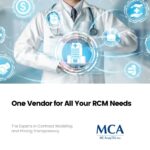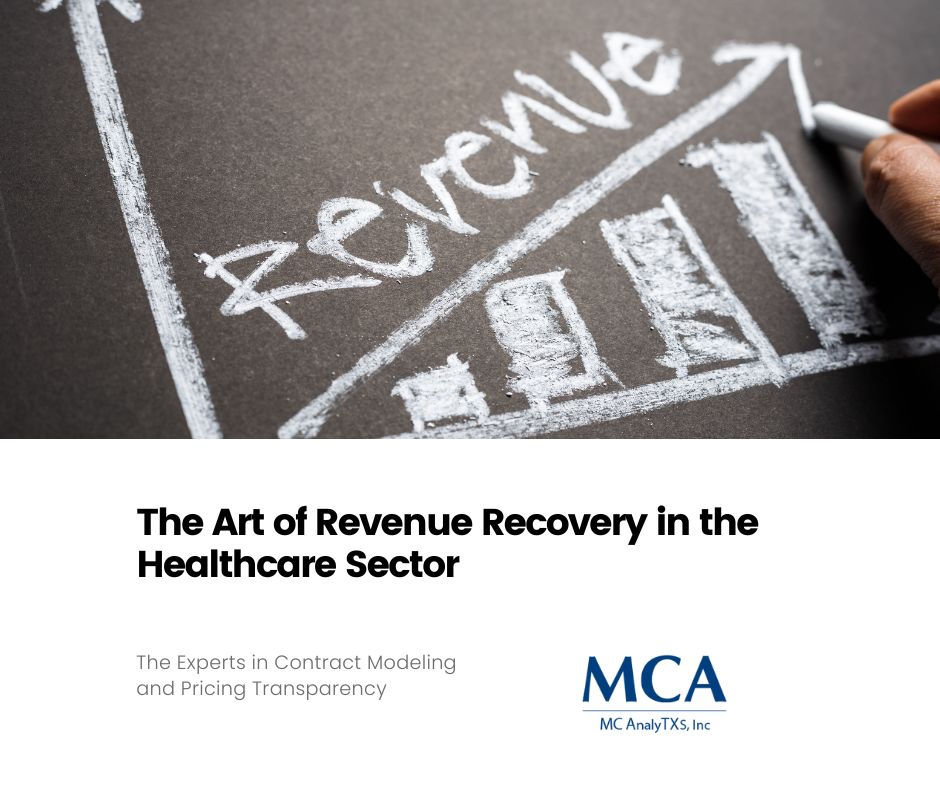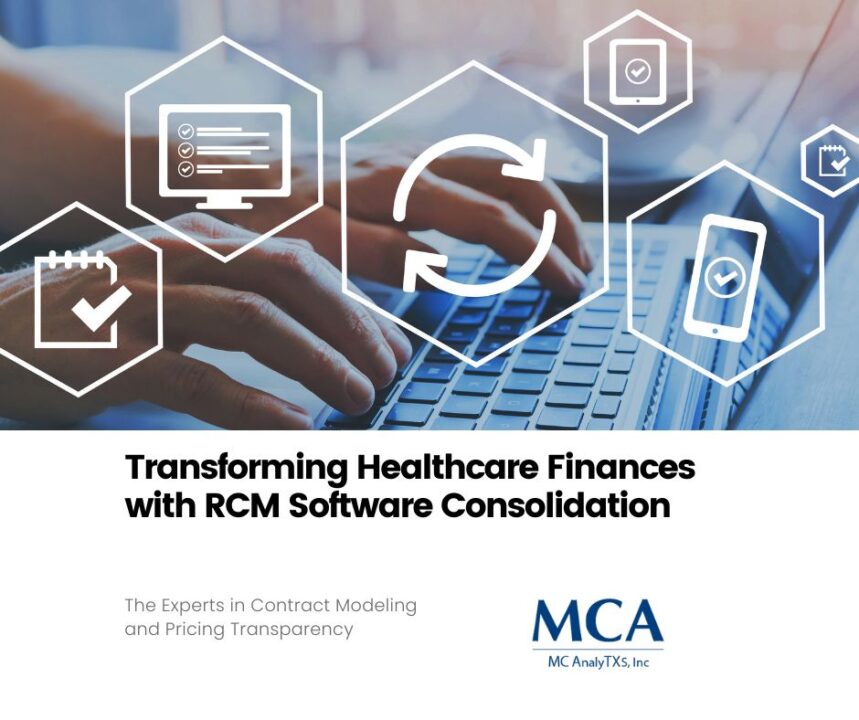
One Vendor for All Your RCM Needs
April 8, 2024
The Smart Route to Revenue Cycle Management: Going Low-Cost with Free Contract Modeling
April 12, 2024In an industry as critical and complex as healthcare, managing revenue effectively can mean the difference between stagnation and growth. Yet, traditional approaches often focus solely on cost-cutting measures, largely ignoring the equally important aspect of revenue generation and cash flow optimization. This oversight prevents many providers from unlocking their full financial potential.
Here, we explore essential strategies to bolster Revenue Cycle Management (RCM), enhancing cash flow sustainably and efficiently. We’ll provide valuable insights for healthcare CFOs and revenue cycle directors looking to fortify their operations and future-proof their institutions in an increasingly competitive market.
Understanding the Revenue Cycle
At its core, the Revenue Cycle is a series of processes healthcare institutions undertake to manage administrative and clinical functions that directly or indirectly lead to the post-management of patient bills. These include:
- Pre-registration and Scheduling: Ensuring patient information and insurance coverage is accurate prior to a service.
- Insurance Verification: Confirming patient eligibility and benefits coverage.
- Medical Treatment: Providing the service in accordance with medical necessity and other requirements.
- Coding and Charge Capture: Properly annotating services rendered for billing and claims processes.
- Billing: Creating and sending out invoices for services.
- Reimbursement: The process in which the collected revenue is reconciled and paid to the institution.
An efficient Revenue Cycle Management process is crucial for accurate and timely reimbursement, which affects a healthcare organization’s financial health.
To fortify your RCM process, start by examining it holistically. Every step is interconnected, and inefficiencies at any point can lead to revenue loss.
Strategic Cost Analysis
Effective RCM begins with a thorough understanding of your financial landscape. It is important to categorize expenses into fixed and variable costs. Fixed costs, such as rent and salaries, are those that remain constant, regardless of the organization’s activity levels. Variable costs, like medical supplies and utilities, directly correlate with patient volume and services provided.
Cost analysis techniques, such as Activity-Based Costing, can help attribute costs more accurately to the services provided, giving a clearer picture of profitability. By identifying high-cost, low-reimbursement services, you can make informed decisions about resource allocation and service line optimization.
Remember, while controlling costs is important, it should not be at the expense of quality. Ensure the services you cut or scale back on do not diminish the patient experience or the standard of care provided.
Proactive Denial Management
Preventing denials before they happen is far more cost-effective than reworking them post-adjudication. Common denial causes include:
- Eligibility issues
- Authorization lapses
- Incorrect patient information
- Coding errors
- Duplicate claims
By analyzing denial trends, you can pinpoint root causes and develop strategies to mitigate them. This could involve front-end staff training, automation solutions for checking patient information and coverage, and regular coding education to stay abreast of industry changes.
For recurring denial patterns, institute check-and-balance systems to validate information before claims submission. Regular audits can also help manage and reduce denial rates, ensuring a steady cash flow for your organization.
Transparency and Patient Engagement
Transparency in the billing process is not only a regulatory requirement in many jurisdictions, but it also promotes patient satisfaction and timely payments. Ensure that patients understand their financial responsibilities upfront by providing clear estimates of out-of-pocket costs prior to service.
Implement patient-friendly billing practices, like itemized bills and easy-to-understand language, to reduce confusion and questions. Engage with patients early and often, offering various payment options and financial assistance programs, if applicable.
Utilize technology to your advantage, with online portals for bill pay, FAQs, and virtual chat support to help patients manage their financial obligations conveniently and independently. The more control patients feel they have over their healthcare finances, the more likely they are to satisfy their bills promptly.
Streamlined Processes and Automation
Manual processes are not only prone to human error but can also be time-consuming and costly. Transitioning to automated solutions for tasks like eligibility verification, claims submission, and remittance posting can lead to significant cost savings and reduced payment cycle times.
Automated systems can also assist with contract management and payment variance analysis, ensuring that your organization is paid what it’s due, in compliance with payer contracts.
However, automation should not mean a lack of oversight. It’s critical to regularly audit and update your systems to adapt to changing regulations and payer requirements.
Leveraging Data Analytics
Data is one of your most powerful tools when it comes to revenue recovery. Utilize business intelligence and analytics tools to gain insights into your RCM performance, identify trends, and predict future outcomes.
With a data-driven approach, you can:
- Drive operational efficiency by reallocating resources to high-performing areas.
- Identify revenue opportunities by uncovering undercharged services or billing errors.
- Measure and improve key performance indicators (KPIs) such as days in accounts receivable and net collection rates.
Ensure your analytics are actionable by setting measurable goals and tracking progress over time. Make informed decisions based on your data to continuously optimize your RCM process.
Compliance and Auditing Practices
Navigating the complex web of healthcare regulations is a non-negotiable part of RCM. Ensure that your institution and staff are up-to-date with the latest compliance standards to avoid costly penalties and revenue loss.
Regular internal and external audits can help detect and correct compliance issues, preventing them from affecting reimbursements. Invest in compliance education and training for your team to foster a culture of adherence and accuracy.
Develop strong audit procedures, and utilize technology to assist with audit tracking and workflows, ensuring that your organization is always audit-ready.
Strategic Partnerships and Collaborations
In an industry as interconnected as healthcare, strategic partnerships can bolster your RCM efforts. Collaborate with revenue cycle management companies and technology vendors to gain expertise and access to innovative solutions that can enhance your processes.
Explore value-based partnerships with payers and other providers that can lead to a more predictable and stable revenue stream. These collaborations can also provide opportunities for shared best practices and continuous learning.
Remember, when entering into partnerships, align incentives and goals to ensure both parties benefit and are equally invested in the success of the project.
Continuous Staff Training and Development
The final piece of the RCM puzzle is the human element. Well-trained and motivated staff can make or break your revenue cycle. Invest in continuous education for your team, keeping them informed about new regulations, best practices, and system updates.
Encourage an environment of learning and improvement, where staff members are empowered to suggest and implement process enhancements. Recognize and reward staff for their contributions to revenue recovery and overall RCM success.
In conclusion, mastering revenue recovery in healthcare requires a multifaceted approach that is rooted in financial analysis, operational efficiency, patient-centric practices, compliance vigilance, and strategic collaboration. By implementing the strategies outlined above, healthcare organizations can achieve a more robust and resilient RCM system, better positioned to weather industry challenges and capitalize on growth opportunities.
The road to optimal revenue recovery may be paved with challenges, but with the right strategies, it promises a healthier, more prosperous future for your healthcare institution.





